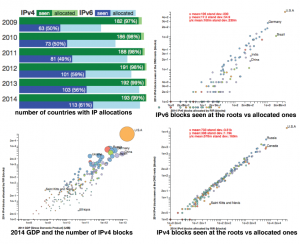architecture innovation 2020 (and 2030)
Friday, October 17th, 2014 by kcToday I participated as a panelist in the Internet Regulation 2020 hosted by Duke Law’s Center for Innovation Policy at the National Academy of Sciences. The questions for my panel were:
What are the most significant realistic changes in network architecture, capacity, and connectivity by 2020? In what ways might these developments be affected, perhaps even precluded, by regulatory policy? In what ways might these developments in turn affect regulatory policy? What are the costs and benefits of these developments and their possible regulation?
My slides (which link to related reading on last slide):
http://www.caida.org/publications/presentations/2014/internet_architecture_innovation_duke/
